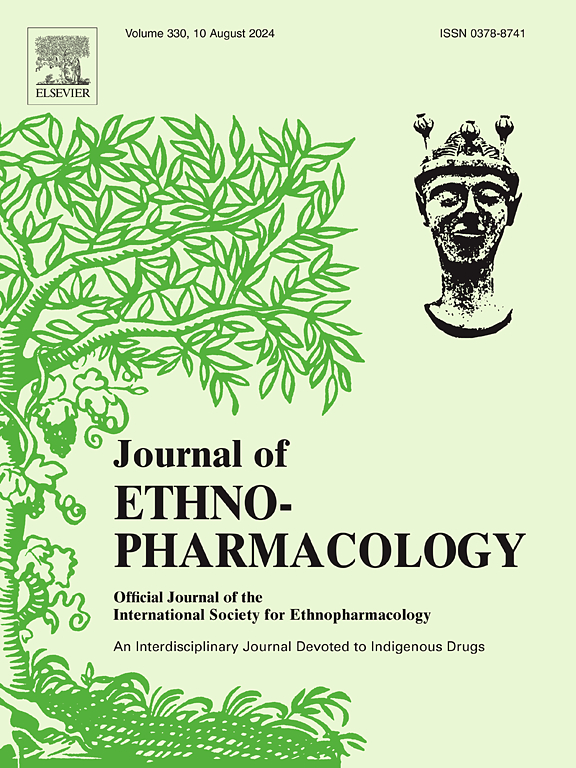Scutellariae Radix and Coptidis Rhizoma improve NAFLD via regulation of SIRT6/ACSL5 pathway and SCD1
IF 4.8
2区 医学
Q1 CHEMISTRY, MEDICINAL
引用次数: 0
Abstract
Ethnopharmacological relevance
The herbal pair Scutellariae Radix-Coptidis Rhizoma (SR-CR) has been widely used in Traditional Chinese Medicine (TCM) for treating metabolic disorders, including nonalcoholic fatty liver disease (NAFLD) -related conditions. Its traditional use highlights its potential in addressing the multifaceted pathogenesis of NAFLD, though the underlying mechanisms remain unclear.
Aim of the study
To evaluate the therapeutic efficacy of the SR-CR herbal pair in alleviating NAFLD and to elucidate its mechanisms of action, with a specific focus on lipid metabolism pathways.
Materials and methods
The therapeutic effects of SR-CR were assessed using a high-fat diet (HFD)-induced NAFLD rat model and HepG2 cell model. Multi-omics analyses were employed to identify molecular targets and pathways, while affinity ultrafiltration-mass spectrometry characterized bioactive constituents. Findings were validated in vivo and in vitro via Western blot and immunofluorescence. Protein-constituent interactions were further characterized by surface plasmon resonance and molecular docking.
Results
SR-CR significantly alleviated NAFLD symptoms in HFD-fed rats by reducing hepatic lipid accumulation, inflammation, and hepatocyte ballooning while normalizing biochemical indicators. Mechanistic studies revealed that SR-CR regulates the SIRT6/ACSL5 pathway and SCD1, both critical to lipid metabolism. Scutellariae Radix (SR) and its major constituent, baicalin, enhanced ACSL5 activity via SIRT6-mediated deacetylation, promoting fatty acid oxidation and intracellular lipid utilization. Coptidis Rhizoma (CR) and its primary component, berberine, inhibited SCD1, thereby reducing de novo lipogenesis. These complementary effects synergistically enhanced energy expenditure and reduced lipid synthesis.
Conclusion
The SR-CR herbal pair effectively alleviates HFD-induced NAFLD by synergistically modulating lipid metabolism, enhancing energy expenditure, and reducing de novo lipogenesis through the regulation of the SIRT6/ACSL5 pathway and SCD1. These findings provide molecular evidence for the traditional use of SR-CR in treating metabolic disorders and highlight its potential as a plant-based therapeutic for NAFLD.

求助全文
约1分钟内获得全文
求助全文
来源期刊

Journal of ethnopharmacology
医学-全科医学与补充医学
CiteScore
10.30
自引率
5.60%
发文量
967
审稿时长
77 days
期刊介绍:
The Journal of Ethnopharmacology is dedicated to the exchange of information and understandings about people''s use of plants, fungi, animals, microorganisms and minerals and their biological and pharmacological effects based on the principles established through international conventions. Early people confronted with illness and disease, discovered a wealth of useful therapeutic agents in the plant and animal kingdoms. The empirical knowledge of these medicinal substances and their toxic potential was passed on by oral tradition and sometimes recorded in herbals and other texts on materia medica. Many valuable drugs of today (e.g., atropine, ephedrine, tubocurarine, digoxin, reserpine) came into use through the study of indigenous remedies. Chemists continue to use plant-derived drugs (e.g., morphine, taxol, physostigmine, quinidine, emetine) as prototypes in their attempts to develop more effective and less toxic medicinals.
 求助内容:
求助内容: 应助结果提醒方式:
应助结果提醒方式:


